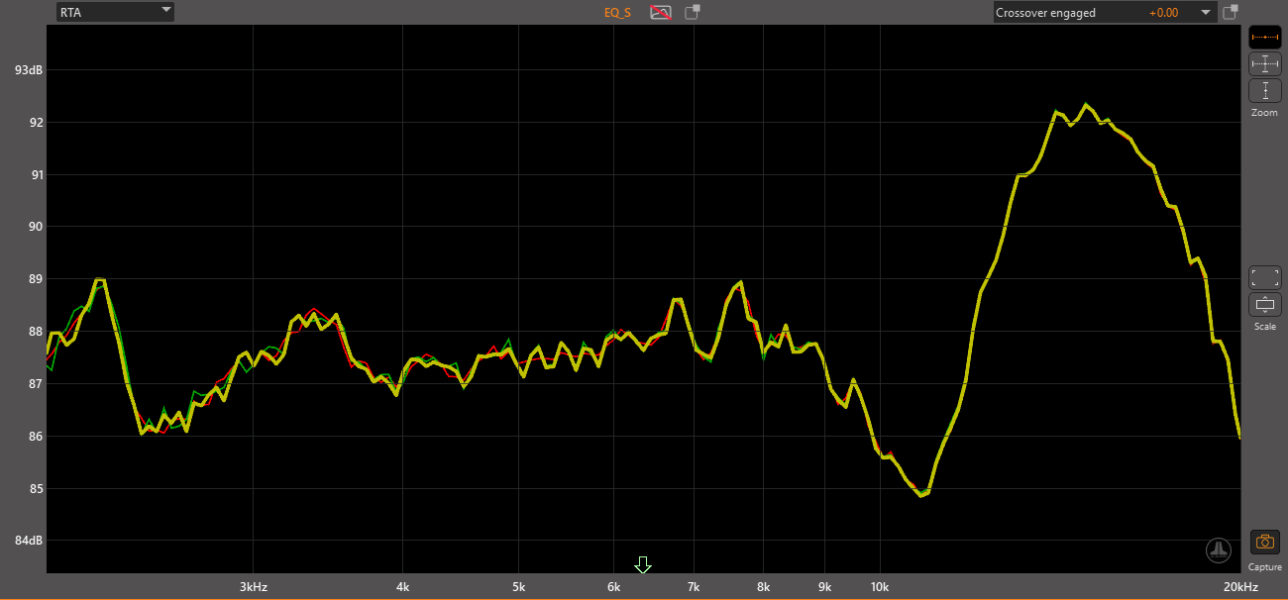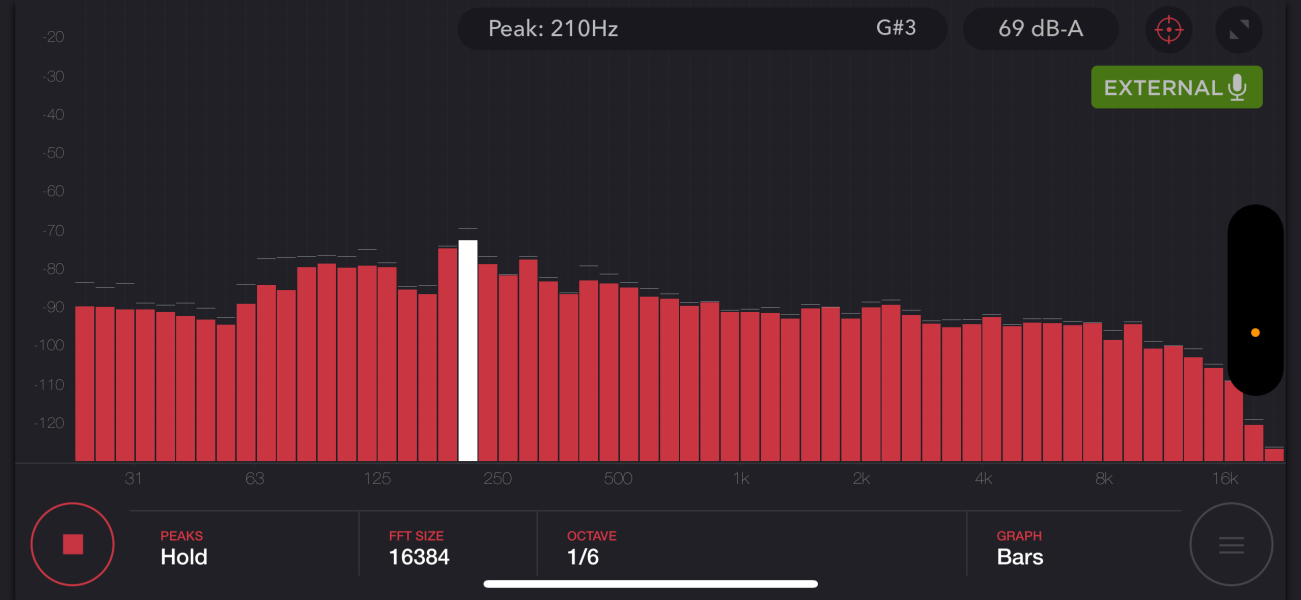I've been particularly interested in the discussion of the CR-1's transparency. I have not personally received any negative feedback about transparency until now, and it's not something I've experienced with the CR-1 myself. Since treble has specifically been mentioned, I decided to take some measurements of what's happening in the tweeter of a speaker with the CR-1 in and out of the system. These are near-field measurements with the mic directly in front of the tweeter's center. This should minimize the acoustic effects of my office. I used an inexpensive powered speaker that doesn't have the greatest frequency response, but it's what I had close by and still effectively demonstrates the point.
The first graph is zoomed way into the treble region, displaying only 1750Hz to 20kHz (1750Hz is where this tweeter is crossed over). This gives us a microscopic look at what's happening. The red trace is the speaker without the CR-1 connected to the system at all. The green trace is the CR-1 hooked up, but in bypass mode. The yellow trace is the CR-1 with the crossover engaged.
View attachment 133681
Below 1750Hz is not relevant to the test, but here's a zoomed out view just to give you a frame of reference at normal scale with the entire frequency spectrum.
View attachment 133682
We can see that the three response curves are right on top of each other. The tiny variations are well within the margin of error.
Side note: the bypass mode on the CR-1 effectively removes it from your system completely. It is a "true bypass" device. The signal goes through the input and right back out of the outputs. The CR-1 doesn't even need to have power connected to be bypassed. This allows for easy comparisons of your system with and without the CR-1 in the chain.
Just a quick test I thought some might find interesting or useful. I always like an excuse to hook up a mic and experiment.

















